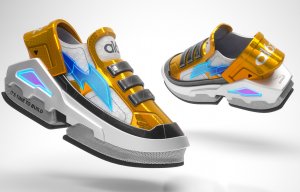
Nike acquires virtual shoe company
Nike, a leading designer of athletic footwear, apparel, equipment and accessories for a wide variety of sports and fitness activities, has released its FY12-13 Sustainable Business Performance Summary, providing an update on performance against current business, labour and environmental targets as the company works toward its goal of decoupling profitable growth from constrained resources. The report, which outlines both successes and challenges, shows the company is making progress across key impact areas of climate and energy, labour, chemistry, water, waste and community. “Nike's success as a growth company is tied directly to our culture of innovation. Today we believe that sustainable innovation that benefits the athlete, the company and the planet will play a key role in the future of our business,” said Mark Parker, Nike President and CEO, in the report’s introduction.

8th May 2014
Innovation in Textiles
|
Washington, DC
Nike, a leading designer of athletic footwear, apparel, equipment and accessories for a wide variety of sports and fitness activities, has released its FY12-13 Sustainable Business Performance Summary, providing an update on performance against current business, labour and environmental targets as the company works toward its goal of decoupling profitable growth from constrained resources.
The report, which outlines both successes and challenges, shows the company is making progress across key impact areas of climate and energy, labour, chemistry, water, waste and community.
“Nike's success as a growth company is tied directly to our culture of innovation. Today we believe that sustainable innovation that benefits the athlete, the company and the planet will play a key role in the future of our business,” said Mark Parker, Nike President and CEO, in the report’s introduction.
Evidence of the company’s progress includes an absolute reduction of carbon emissions of close to 3% across the whole value chain from its FY11 baseline, while revenue grew 26% over the same period.
Production also grew while the company fulfilled its strategic aim to source from fewer, better-performing contract factories, with a 14%reduction – from 910 to 785 factories over the last two years.
Some of the challenges in the industry include the rate at which environmentally preferred materials are becoming available at competitive pricing in the market and the rate at which the market adopts new green technologies.

The report outlines the company’s approach to understanding and addressing the meta-trends facing business. In addition, Nike provides a transparent big-picture view of the impacts across its entire value chain, from growing and processing materials to a product’s end of life, and the steps of manufacturing, transport, distribution and selling in between.
“We are constantly integrating more sustainable ways of working across our business. But we recognise that many issues facing business and society are greater than one brand can solve alone,” commented Hannah Jones, Nike Chief Sustainability Officer & Vice President, Innovation Accelerator.
“To achieve systemic change we must understand risk and embrace innovation as a way to accelerate positive impacts at scale. Collaboration and unconventional partnerships will be critical to our collective ability to design more sustainable business systems.”

The progress on current goals includes:

Business intelligence for the fibre, textiles and apparel industries: technologies, innovations, markets, investments, trade policy, sourcing, strategy...
Find out more